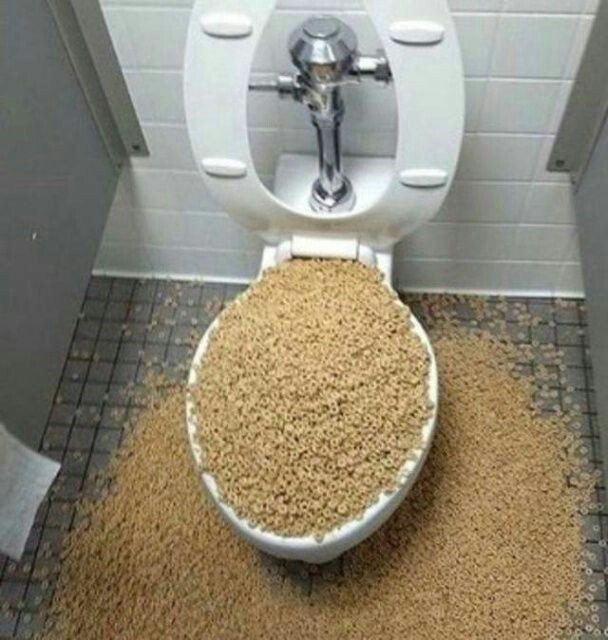Can You to Dispose of Food in the Toilet?
Can You to Dispose of Food in the Toilet?
Blog Article
Do you find yourself on the lookout for insight around What Can Happen If You Flush Food Down the Toilet??

Intro
Lots of people are often confronted with the dilemma of what to do with food waste, particularly when it pertains to leftovers or scraps. One typical concern that develops is whether it's alright to purge food down the commode. In this post, we'll explore the reasons why people could consider flushing food, the repercussions of doing so, and different approaches for correct disposal.
Reasons that individuals could consider flushing food
Absence of awareness
Some individuals might not know the prospective harm triggered by purging food down the commode. They might wrongly believe that it's a safe method.
Convenience
Flushing food down the toilet might seem like a fast and very easy solution to dealing with unwanted scraps, specifically when there's no neighboring trash can offered.
Laziness
In many cases, individuals may merely choose to flush food out of large idleness, without thinking about the consequences of their activities.
Consequences of flushing food down the toilet
Ecological impact
Food waste that winds up in rivers can contribute to contamination and damage aquatic environments. In addition, the water used to purge food can strain water resources.
Plumbing issues
Purging food can lead to blocked pipes and drains, creating expensive pipes repair services and inconveniences.
Types of food that should not be purged
Fibrous foods
Foods with fibrous textures such as celery or corn husks can get tangled in pipelines and create obstructions.
Starchy foods
Starchy foods like pasta and rice can soak up water and swell, bring about clogs in pipelines.
Oils and fats
Greasy foods like bacon or cooking oils must never be purged down the toilet as they can solidify and create blockages.
Correct disposal approaches for food waste
Utilizing a waste disposal unit
For homes outfitted with waste disposal unit, food scraps can be ground up and flushed via the pipes system. However, not all foods appropriate for disposal in this way.
Recycling
Certain food packaging materials can be recycled, minimizing waste and decreasing environmental impact.
Composting
Composting is an eco-friendly way to deal with food waste. Organic materials can be composted and made use of to improve dirt for gardening.
The importance of correct waste monitoring
Minimizing environmental damage
Appropriate waste monitoring methods, such as composting and recycling, aid minimize air pollution and preserve natural resources for future generations.
Safeguarding pipes systems
By staying clear of the practice of flushing food down the bathroom, home owners can prevent costly pipes repairs and maintain the integrity of their pipes systems.
Verdict
In conclusion, while it may be alluring to purge food down the commode for ease, it is very important to comprehend the possible repercussions of this activity. By embracing appropriate waste monitoring practices and throwing away food waste properly, individuals can contribute to healthier pipes systems and a cleaner environment for all.
FLUSH FOOD DOWN THE TOILET?
FLUSHING FOOD CAN CAUSE BLOCKED DRAINS IN YOUR HOME
All of the plumbing fixtures in your home are connected to the same sewer pipe outside of your home. This outdoor sewer pipe is responsible for transporting all the wastewater from your home to the Council sewer mains. Even small pieces of food that go down the kitchen sink can cause problems for your sewer. It should therefore be obvious that flushing larger bits of food, such as meat, risks a clog in either the toilet itself or the sewer pipes. Flushing greasy food is even more problematic because oil coagulates when it cools, coating the interior lining of your pipes.
THE TOILET IS NOT A BIN
Food isn’t the only thing that people shouldn’t be flushing down the toilet. People use the toilet to dispose of all kinds of things such as tampons, makeup wipes, dental floss, kitty litter and even underwear. Water goes to great lengths to educate residents about the high costs and stress placed on wastewater treatment systems simply from people flushing the wrong stuff down the toilet. It costs taxpayers millions of dollars each year, and homeowners thousands in blocked drain repairs.
FLUSHING FOOD IS A WASTE OF WATER
Flushing food is a waste of our most precious resource - water. In June this year Level 1 water restrictions were introduced to protect water supply from drought conditions. Much of New South Wales continues to be affected by prolonged drought with recent figures revealing up to 97 per cent of the state remains in drought. Depending on whether you have a single or dual flush toilet, every single flush uses between five and 11 litres of water. In the current climate this is a huge amount of water to be wasting on flushing food that should be placed in the bin (or better yet, the compost).
https://www.jabplumbingsolutions.com.au/blog/can-you-flush-food-down-the-toilet

I came across that piece of writing about Flushing Food Down the Toilet? when doing a lookup on the search engines. Sharing is nice. Helping people is fun. Thanks for going through it.
Customer Reviews Report this page